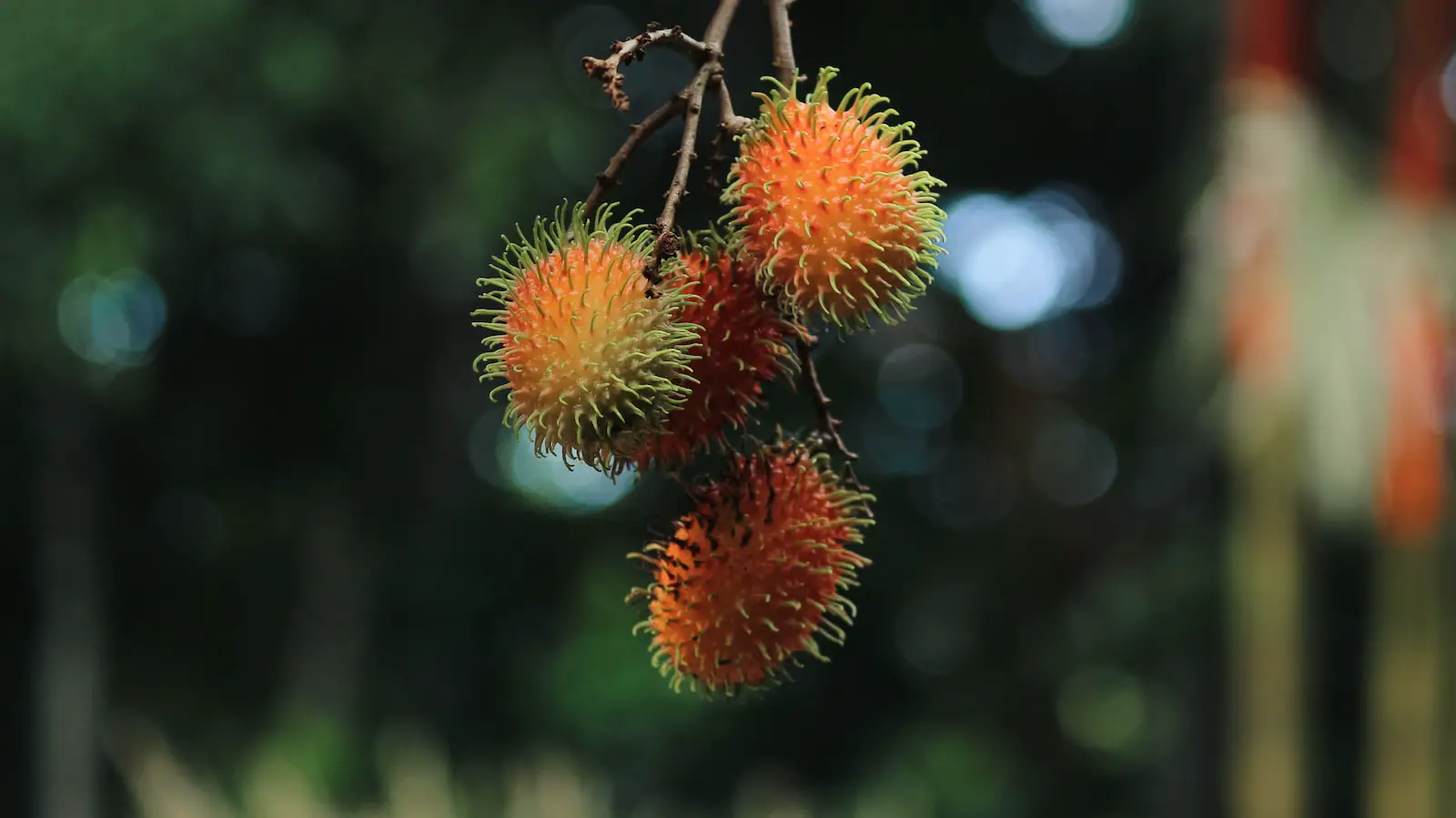Rambutan, a tropical fruit bearing tree native to Southeast Asia, has been captivating taste buds with its sweet and sour flavor. This exotic tree produces fruit that’s covered in a hairy, red exterior, giving the Rambutan its unique appearance and name, derived from the Malay word “rambut,” meaning hair. Inside, the juicy white flesh provides a rich source of nutrients, including vitamin C, iron, and fiber.
Growing Rambutan is an endeavor filled with rewards but also demands certain conditions and care. The tree thrives in tropical climates, where constant warmth, high humidity, and well-drained soil offer the ideal environment. Once established, the Rambutan tree can become a stunning focal point of a garden, with its lush, evergreen foliage and striking fruit.
Cultivating Rambutan requires an understanding of its particular needs and a commitment to meeting them. Though it can be a challenge outside its native range, successful cultivation is achievable with proper care, patience, and adherence to specific requirements. This guide offers insights into everything you need to know about growing and caring for a Rambutan tree.
| Common Names | Rambutan |
|---|---|
| Botanical Name | Nephelium lappaceum |
| Family | Sapindaceae |
| Plant Type | Tropical Evergreen Tree |
| Mature Size | 40-60 feet tall |
| Sun Exposure | Full Sun |
| Soil Type | Well-drained, Slightly Acidic |
| Hardiness Zones | 10-11 |
| Native Area | Southeast Asia |
Rambutan Care
Rambutan trees require a specific set of conditions to flourish. They need full sun and prefer well-drained, slightly acidic soil. Regular watering is essential, especially during the dry season, to keep the soil consistently moist. Proper spacing is critical to allow air circulation, reducing the risk of diseases.
Fertilization is an important aspect of Rambutan care, with regular applications of a balanced fertilizer promoting growth and fruit production. Proper pruning and vigilance for signs of pests and diseases will contribute to the overall health and productivity of the tree.
Light Requirement for Rambutan
Rambutan requires full sun and thrives when it receives at least 6-8 hours of direct sunlight each day. Insufficient sunlight can affect the tree’s growth and fruit production.
Soil Requirements for Rambutan
Rambutan prefers well-drained, slightly acidic soil with a pH ranging from 5.5 to 6.5. A loamy soil rich in organic matter provides the best conditions for growth.
Water Requirements for Rambutan
Watering Rambutan consistently is vital, especially during dry periods. The soil should be kept moist but not waterlogged, with deeper, less frequent watering proving more effective.
Temperature and Humidity
Rambutan trees thrive in temperatures between 71°F to 86°F and require high humidity. They are not frost-tolerant and can be severely affected by cold temperatures.
Fertilizer
A balanced fertilizer, containing equal parts of nitrogen, phosphorus, and potassium, applied regularly will support Rambutan’s growth and fruit production.
Pruning Rambutan
Pruning should be performed to remove dead or diseased branches and to shape the tree. It helps in improving air circulation and sunlight penetration, encouraging healthy growth.
Propagating Rambutan
Rambutan can be propagated through seeds, cuttings, or grafting. Grafting from a mature tree ensures that the offspring will have the same fruiting characteristics.
How To Grow Rambutan From Seed
Growing Rambutan from seed can be an exciting but slow process. Fresh seeds should be planted in well-drained soil and kept warm. Germination may take a few weeks.
Common Pests & Plant Diseases
Aphids
Controlling aphids can be achieved with insecticidal soap.
Fruit Flies
Trapping and using specific insecticides can manage fruit flies.
Anthracnose
A fungal disease, anthracnose, can be treated with fungicides.
Common Problems With Rambutan
Root Rot
Caused by overwatering, root rot can be avoided with proper drainage.
Leaf Spot
Leaf spot diseases can be managed through proper spacing, pruning, and fungicides.
Poor Fruit Development
Inadequate care or poor pollination can lead to poor fruit development.
Pro Tips
- Use fresh seeds for planting as they lose viability quickly.
- Ensure adequate spacing between trees to prevent diseases.
- Consider using mulch to retain soil moisture and control weeds.



